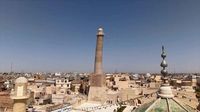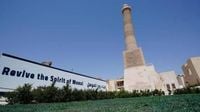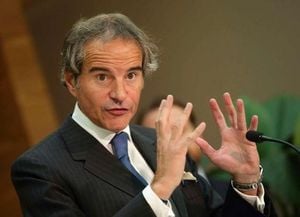On Monday, September 1, 2025, the city of Mosul, Iraq, witnessed a moment that many feared might never come. After eight years of devastation and painstaking reconstruction, the Great Mosque of Al-Nuri—along with its famed leaning al-Hadba minaret and two historic churches—was officially reopened in a ceremony attended by Iraqi Prime Minister Mohammed Shia al-Sudani, international dignitaries, and community leaders. The event marked not only the physical restoration of cherished landmarks but also a symbolic revival of Mosul’s multi-faith heritage and resilience in the face of unimaginable destruction.
The story of the Great Mosque of Al-Nuri is, in many ways, the story of Mosul itself. Built in 1172 by Nur ad-Din Zangi, the mosque stood as a beacon of Islamic civilization for more than 850 years. Its 55-meter minaret, al-Hadba—affectionately known as "the hunchback"—leaned over the city’s skyline, becoming an iconic symbol of Mosul’s rich past. But in 2017, as Iraqi forces closed in to reclaim the city from ISIS militants, the mosque and its minaret were reduced to rubble by explosives set by the retreating group. The destruction was not merely architectural; it was an attempt, as Prime Minister al-Sudani put it, "to erase Mosul’s history and sever its connection to its glorious past."
The loss was deeply felt. The al-Nuri Mosque was not just a religious site—it was the very place where ISIS leader Abu Bakr al-Baghdadi declared the so-called "caliphate" in June 2014, an act that thrust the world’s attention onto Mosul and signaled the beginning of a brutal occupation. For nearly three years, ISIS held the city in a grip of fear, until Iraqi forces, backed by a US-led coalition, finally liberated Mosul in 2017. The battle left much of the Old City, including more than 80% of its historic core, in ruins, according to UNESCO.
Yet, hope was not lost. In 2018, UNESCO launched the "Revive the Spirit of Mosul" initiative, a massive heritage project aimed at restoring the mosque, its minaret, the 19th-century Dominican Church of Our Lady of the Hour, the 800-year-old al-Tahera Syriac Catholic Church, and over 120 traditional houses. The United Arab Emirates (UAE) stepped in as a major donor, contributing $50.4 million to the effort, with additional support from the European Union and international experts.
The reconstruction process was anything but straightforward. Teams of Iraqi and international architects, engineers, and artisans faced daunting challenges: clearing rubble, salvaging original stones and bricks, and even removing unexploded ordnance—including a bomb discovered beneath the mosque’s dome. Where possible, original materials were reused to preserve the monuments’ historic character, a detail that speaks to the care and reverence invested in the project.
Prime Minister al-Sudani, speaking at the reopening ceremony, called the mosque "a bright symbol of Iraq’s Islamic civilization and a living witness to our people’s journey, crowned with peaceful coexistence and brotherhood." He praised the collaboration between the Iraqi government, UNESCO, the UAE, and other international partners. "The reconstruction of the mosque will remain a milestone, reminding all enemies of the heroism of Iraqis, their defense of their land, and their rebuilding of everything destroyed by those who want to obscure the truth," he declared.
The reopening was more than a celebration of bricks and mortar. It was an assertion of Mosul’s identity as a unique, multicultural city—a place where, before ISIS, Muslims, Christians, and other communities lived side by side. The restoration of the Great Mosque and the churches serves as a testament to this spirit. As UNESCO noted, "Mosul was a unique, multicultural city and a space for interfaith dialogue, which ISIS sought to erase overnight." The return of these religious landmarks restores part of the city’s memory and diversity after years of suffering.
Dr. Mohamed Al Hassan, the UN secretary-general’s special representative for Iraq, underscored the broader significance of the achievement. "This achievement would not have been possible without the genuine determination of the people and government of Iraq, the generous support of the United Arab Emirates, and the tireless efforts of UNESCO," he said. "Through this reopening, Mosul is declaring to the world the triumph of the will to live over the culture of death, and the victory of hope over despair."
The reopening ceremony itself was a powerful moment. Dignitaries from the UAE, UNESCO, the European Union, the United Nations, and local community leaders gathered in the shadow of the newly restored minaret—a structure that had once seemed lost forever. For many in Mosul, the event was a chance to look forward, not just back. "We will continue our support for culture, and efforts to highlight Iraqi antiquities, as a social necessity, a gateway to our country for the world, an opportunity for sustainable development, and a space for youth to innovate," Prime Minister al-Sudani promised.
The restoration also had a practical side. Beyond the mosque and churches, traditional homes in Mosul’s historic quarters were rebuilt, providing much-needed housing for returning residents. The project’s emphasis on preserving cultural identity and fostering coexistence among Mosul’s diverse communities was not lost on attendees or observers. The reopening, as many noted, was not just about the past—it was about forging a future where Mosul’s scars could begin to heal.
Still, challenges remain. The scars of war are visible throughout Mosul, and the work of rebuilding lives and communities is ongoing. But the reopening of the Great Mosque of Al-Nuri and its companion sites stands as a milestone in Iraq’s recovery—a reminder that even in the aftermath of devastation, hope and resilience can prevail. The city’s skyline, once marred by destruction, now features the familiar silhouette of the al-Hadba minaret once again—a sign that Mosul’s spirit endures.
As the sun set over Mosul on that historic Monday, the city’s residents gathered in the Old City, their eyes fixed on the restored minaret. For many, it was a moment of pride, relief, and cautious optimism. The journey to this day has been long and painful, but as the doors of the Great Mosque of Al-Nuri swung open, Mosul declared to the world that it is, indeed, alive—and determined to remember, rebuild, and thrive.





